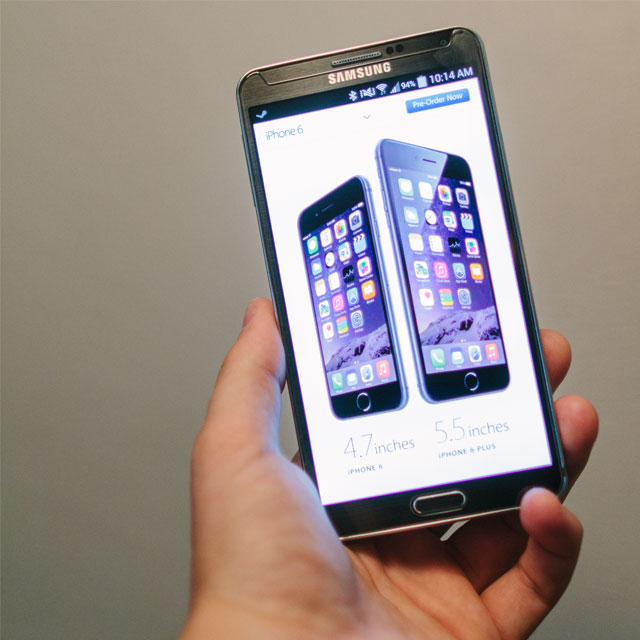Growing Up
I love technology. Ever since i was 10 I’ve been using computers, taking them apart, sometimes putting them back together correctly, and in general keeping up with the latest trends. I’ve never been much of a fanboy for one company or another because I feel like the pace of electronic innovation is moving too fast for one company to consistently be at the forefront every year. This fast pace is no more evident than in the world of smartphones.
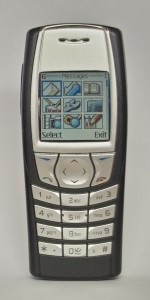 I’m sure you’ve heard the statement that as soon as you buy an electronic it’s obsolete. Cell phones are the epitome of this truth. Currently you have your choice of phones running Apple iOS, Google Android, Blackberry OS, Amazon FireOS, Windows Phone, and those are just the headliners. There’s up and comers like Firefox OS, Blackphone, and Tizen, and you can still buy tablets featuring failed mobile operating systems like Palm’s WebOS on Ebay.
I’m sure you’ve heard the statement that as soon as you buy an electronic it’s obsolete. Cell phones are the epitome of this truth. Currently you have your choice of phones running Apple iOS, Google Android, Blackberry OS, Amazon FireOS, Windows Phone, and those are just the headliners. There’s up and comers like Firefox OS, Blackphone, and Tizen, and you can still buy tablets featuring failed mobile operating systems like Palm’s WebOS on Ebay.
My first phone was a Nokia 6610, one of the first color cell phones; meaning the screen was color, the phone itself was silver. The battery lasted for a week, it had Java games like Snake and a sweet hang-gliding game, and I used it to run over my text message limit every month much to the chagrin of my parents. I upgraded to a flip phone after a few years, and then the revolutionary for its time Motorola RAZR.
In 2003 I began fixing computers for family and friends, and I had taken apart my home PC several times. The first Mac I ever used was one of the Blueberry blue iMacs with the cute little handle and hockey puck mouse. This was pre-OSX days, so the interface looked like a gray turd. In 2005 my school’s lab bought all iMacs and we were required to use them. Thankfully this was at least right after OSX came out, so it did look pretty cool. I knew I would never be a “mac guy” though. Once you understand computers and how to put them together, it really does make sense to build your own. It’s kinda like working on your own car; if you have the time and skill it can be fun, save you money, and result in more power. I built my first computer in January 2009, and am still typing on it right now. Its been through plenty of upgrades, but it still runs as well as the day I built it.
My First iPhone
When the iPhone was announced in early 2007, I was the first person to record Steve Jobs’ entire Keynote speech and put it up on YouTube one 10 minute segment at a time. Yes, this was before YouTube let you have videos longer than 10 minutes. The keynote turned out to be one of Steve’s best, and those keynote videos I uploaded to YouTube got a couple million views. That December, 6 months after the iPhone was released, I bought on of my own.
In marketing there is something called a “first-mover advantage.” Basically, the first company to the market usually has a large head start on the competition and it becomes first in the minds of consumers. This leads to increased market share, sales, hype, and fanboys. iPhone was the first mover to a new market of easy to use smartphones for the masses, and one year after it came out, it was the first mover to offer easy to develop apps that anyone could create and sell. These were two huge advantages that led to Apple being synonymous with “cutting edge technology” and “it just works” user interfaces among others.
I’m sure you can recall the competitors that came out against the iPhone in 2008-2010. Other cell phone manufacturers tried to make touchscreen phones with 1/10th of the capability of the iPhone and failed miserably because they lacked the software to backup any of their hardware. In 2010 I remember first hearing about Android when a friend of mine had the T-Mobile G1. It was a cool phone that showed promise, but I still loved my iPhone. Every year though, I would hear more and more about Android. This was partially due to the AT&T’s exclusivity of the iPhone that really led to Android being able to take hold with the other carriers. All my friends that didn’t have AT&T and wanted a smartphone either switched to AT&T and bought the iPhone or went with Android. The other contributing factor to Android’s growth was the lack of advertising that the carriers did for the iPhone. Because Apple wanted control of the entire user experience, cell phone carriers weren’t able to install their own apps or branding on the phone. The openness of Android let the carriers put whatever bloated programs they wanted on the phones, thus guaranteeing higher profits at the cost of confusing and angering customers. Pay attention next time you see a cell phone commercial, it will probably be for an Android phone.
Android was really the only smartphone operating system that seemed capable of taking on iOS. Granted, there was Palm’s WebOS and a few others, but they never got the market share to survive. By 2012 though, I began to see where iOS was looking dated, and Android had begun to surpass it in many features. Customizable notifications? Android only. Tap to pay using near field communications? Android only. Want to set new default apps so you don’t have to use the built in SMS, Calendar, or Maps app? Android only. The openness of this technology was beginning to appeal to me. I already had built computers for myself and several friends at this point, and I knew that the openness of Android mirrored what Microsoft has done with the Windows operating system in many ways. Whereas no one outside of the tech blogs could tell you how much RAM the latest iPhone has, Android phones feature their processors and RAM prominently. If Android was already ahead of iOS in so many ways by being open, and I enjoyed the customization, it made sense for me to want to change to Android.
In October 2013, my iPhone 4S was two years old, and I was due for a subsidized upgrade with AT&T to the phone of my choosing. I spoke to my friend who had a Samsung Galaxy Note 2 about switching over and buying the Note 3 when it released later that month. He said to me, “If you can handle not being known as an iPhone user, then you’ll be fine and you’ll love Android.” For me to switch I would have to undergo a stigma of sorts that many people have gone through. I would have to explain to my friends why I can’t receive iMessages anymore. I would have to undergo an exodus from the iPhone.
A Fabulous Phablet
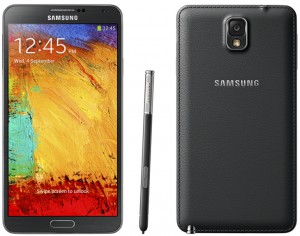 The specs of the Galaxy Note 3 made quite a compelling argument. A massive 5.7 inch screen was literally a huge upgrade from my iPhone 4S diminutive 3.5 inches. Would it even fit in my pocket? What about the skinny jeans I wear on occasion? I was even more swayed by the 3 gigs of RAM it offered. Three Gigabytes! That’s more than my first laptop had! Heck, that’s more than some computers sold today have! It had a 2.4 Gigahertz quad-core processor too, which was pretty amazing. On paper, it sounded perfect.
The specs of the Galaxy Note 3 made quite a compelling argument. A massive 5.7 inch screen was literally a huge upgrade from my iPhone 4S diminutive 3.5 inches. Would it even fit in my pocket? What about the skinny jeans I wear on occasion? I was even more swayed by the 3 gigs of RAM it offered. Three Gigabytes! That’s more than my first laptop had! Heck, that’s more than some computers sold today have! It had a 2.4 Gigahertz quad-core processor too, which was pretty amazing. On paper, it sounded perfect.
I prepared myself for launch day of the Note 3, expecting to have to deal with some semblance of the lines and hype that the iPhone creates. AT&T said on their website they would have it in stock on Friday, October 18th. That Wednesday I checked the AT&T website and saw that several of the stores said they had it in stock early. I called and the guy said, “Sure, we have them right now.” I drove excitedly to the store. There was no line. I was seated and bought the Note 3 within about 10 minutes of arriving. No hype. No crazy Galaxy Note 3 faithful camped out for weeks in advance. Just me and my new massive phone.
It took me about a month to get used to the large size of the phone. I customized it to my heart’s content, gladly uninstalling iTunes from my PC and enjoying the freedom to install what I wanted. Granted, some of my favorite iOS apps weren’t on the phone such as Strut, VSCO Cam, and Tweetbot, but maybe they would arrive on Android eventually? I really did grow to love the phone, Android, and the openness that it has to offer. I could use the SMS apps I wanted, everything was integrated with the Google apps that I use every day, and I could make the interface look however I want. Samsung had done a great job with the hardware too. I swapped out my battery for a larger one, popped a 64GB micro-sd card in the back, and could even change channels with the infrared sensor on the phone. The interface was even USB 3.0, so I could use the plethora of cables I had instead of buying Apple’s proprietary Lightning Connector.
Falling Out Of Love
After about 5 months, I began to fall out of love. Not with Android, my goodness I love Android and what Google is doing with the software side of things. I fell out of love with Samsung and all of their “features” they’ve added to the phone. Multi-window mode that only works with a few apps? Check. Inconsistent interface with different styles that I can’t change? Check. S-pen that I really didn’t need? Check. Bloated apps such as S Health, S Voice, S Note, Samsung Hub, WatchOn, Flipboard, ChatON, etc etc etc. So many apps that I didn’t need, didn’t want, and they were constantly running, not able to be disabled, and slowing down the core Android operating system. It’s like Samsung put all their effort into making good hardware, and then put everything and the kitchen sink into the software without thinking about how that would effect the speed and quality of the user experience. Samsung, and even Google to some extent, has focused their software on doing a lot of things decently, whereas iOS has focused on doing fewer things really well. When I used my friend’s iPhone 5S I saw how fast and fluid the operating system was, and I missed it. I felt pangs of regret over leaving an operating system that was exactly designed for the hardware it was created for.
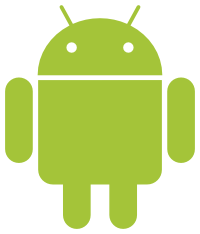 Currently, Android has an 85% global market share. Let that sink in for a minute. 85% of the smart phones sold in the world are running Android. By this logic one would think that Android users have an app store overflowing with amazing and exclusive apps because developers want to create apps that will get in front of the most faces and thus make them more money. But this isn’t the case! Apple still has the first-mover advantage with their apps, and they have more apps and developers creating for iOS. To this day, a lot of the Android apps released feel like after-thoughts of the iOS versions. Even some of the official Google apps have more features on iOS than on Android. I feel like developers are going to realize how much more they can make on Android, and they are really going to start coming over from iOS in droves, but it hasn’t happened yet.
Currently, Android has an 85% global market share. Let that sink in for a minute. 85% of the smart phones sold in the world are running Android. By this logic one would think that Android users have an app store overflowing with amazing and exclusive apps because developers want to create apps that will get in front of the most faces and thus make them more money. But this isn’t the case! Apple still has the first-mover advantage with their apps, and they have more apps and developers creating for iOS. To this day, a lot of the Android apps released feel like after-thoughts of the iOS versions. Even some of the official Google apps have more features on iOS than on Android. I feel like developers are going to realize how much more they can make on Android, and they are really going to start coming over from iOS in droves, but it hasn’t happened yet.
I feel like I need to say something about the speed of the updates to the operating system as well. On iOS, Apple has full control of operating system updates, and they are pushed out to all iOS devices simultaneously. When iOS 8 is released, everyone with an iPhone 4S and later can download it immediately for free. Android on the other hand is incredibly slow to update, and there is no guarantees that your phone will receive an update. My Note 3 came with Android 4.3 when I bought it. One month later Android 4.4.2 was released. If I was on iOS I would have had it upgraded the day it came out. Instead, Samsung’s engineers and AT&T’s engineers had to inspect it and ensure it would run all their included software well. I didn’t get the update to 4.4.2 until February of the next year, 5 months later. Even when I got it, the update took a week to be pushed to my phone after being released. Today, Android 4.4.4 has been out for several months and I have yet to hear anything about getting the update on my device.
My wife has an old iPhone 4 that she still uses. She’s been due for an upgrade for years, and up until a week ago, I was fully planning on getting the Google Nexus 6 when it comes out. There are rumors that the Nexus 6 will have a large screen like the Note 3, but no pen, no Samsung software crap, and it gets updates as soon as they come out. So when the successor to 4.4 KitKat comes out for Android, the phone will receive the update the day it is released. And the new Android release looks amazing! Google finally has a set of design guidelines that look even better than iOS in my opinion, and I believe that when this update is released and the design guidelines trickle down to the developers, there will be some truly beautiful apps made on Android. Here’s a preview:
Return to the iPhone
At WWDC 2014 in June, Apple announced iOS 8, which included a lot of features that Android already had including Widgets, third-party keyboards, and more ways for apps to connect with each other. A lot of these new features Android had since 2011 and I wasn’t very interested; mainly because I knew that the rumors were pointing to the newest iPhone being 4.7 inches, a lower resolution screen, and generally not the hardware I was wanting.
In the weeks leading up to the release of the iPhone 6, I had heard rumors that Apple was making a large screened “phablet” to compete with Samsung’s Note line and other large screened Android phones. I doubted the rumors though and decided to wait for Google to come out with the Nexus 6. Then the Apple Tuesday event came, and while watching a live stream of the unveiling, I saw that the rumors had been true! There was a large screened iPhone coming out! And it hit me, I could return to Apple.
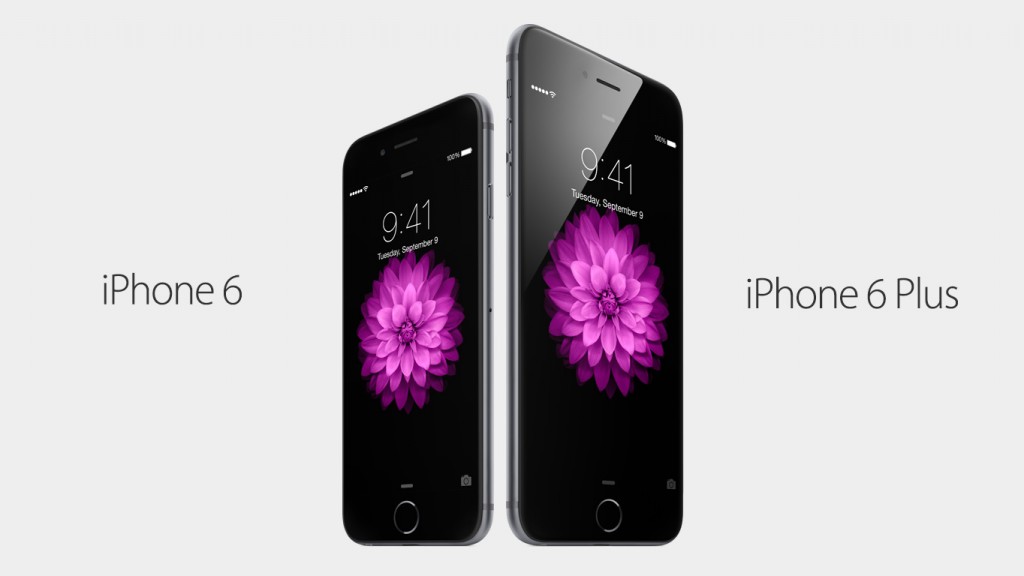 I could return to the interface that made me fall in love with smart phones from the beginning. My friends could send me iMessages again. A lot of the apps that I loved on iOS that never made it to Android would be waiting on me to come back. And I would get all those features that were on Android in 2011. They may not be the most cutting edge, but I was guaranteed that they would work properly. I could use the keyboard that I wanted. My phone would know my fingerprints and be more secure. And I could do it all with a large screen that I loved. So I took the plunge and pre-ordered the latest iPhone 6 Plus at 2am Friday morning. I’m really excited about it! I’m looking forward to the hype, the lines, and the fanboys arguing. I missed it.
I could return to the interface that made me fall in love with smart phones from the beginning. My friends could send me iMessages again. A lot of the apps that I loved on iOS that never made it to Android would be waiting on me to come back. And I would get all those features that were on Android in 2011. They may not be the most cutting edge, but I was guaranteed that they would work properly. I could use the keyboard that I wanted. My phone would know my fingerprints and be more secure. And I could do it all with a large screen that I loved. So I took the plunge and pre-ordered the latest iPhone 6 Plus at 2am Friday morning. I’m really excited about it! I’m looking forward to the hype, the lines, and the fanboys arguing. I missed it.
Is Apple going to out-revolutionize all other smartphone operating systems? No, I don’t think so. Is Apple even on the cutting edge of development with eye tracking software, heartbeat monitors, and a stylus? Nope. Is Apple even doing as well as Google Drive with their new iCloud Drive? It isn’t even close. But for now, as least in my opinion, Apple is doing enough right for me to want to return to them. I will take Apple doing less things really well than Android doing a lot of things decently. I don’t know what things will look like in a year from now when the latest smartphones and Android releases come out. Maybe I will switch back to Android in a year. Or maybe Windows phone will be more compelling (gasp!) and I will switch to that. Whatever the case, the smartphone landscape is changing far too quickly to be a fanboy to one operating system, one hardware manufacturer, or one company. I always have been and always will be a fan of technology, and wherever I think the most innovation is happening there I’ll be. I’m glad to be back with iOS. For now.
Thanks for reading. This isn’t my typical type of post on my blog, but this site is a home for what I’m passionate about, and technology is one of those things. Speaking of things I’m passionate about, you should watch this wedding I filmed.

